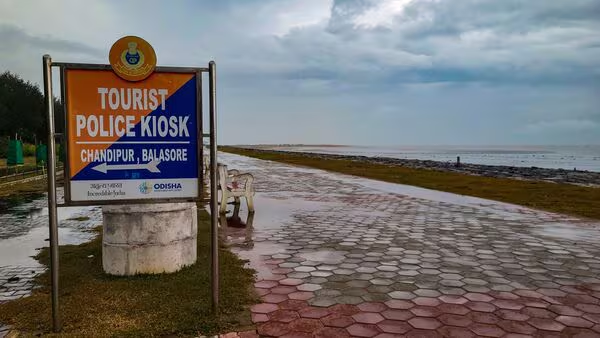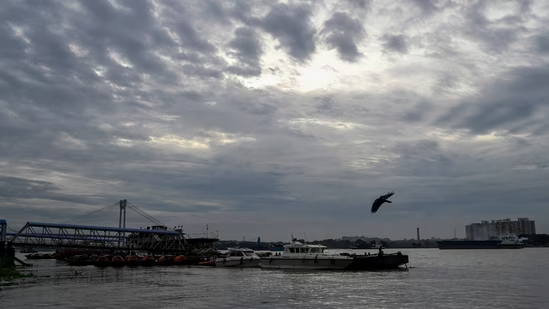The Highlights:
All measures have been in place in the eastern states of Odisha and West Bengal as Cyclone Dana will land between the night of October 24 and the early hours of October 25. With probable wind speeds crossing 120 km/h and substantial rainfall predicted, the authorities of the two states have been taking stringent measures to minimize damage and casualties.
IMD Issues Alerts and Predictions
The India Meteorological Department (IMD) has sounded a red warning for heavy rain for the coastal areas of Odisha and Bengal as the storm that brewed over Bay of Bengal is likely to turn into a severe cyclonic storm while tracking west-northwest towards Indian coast. The districts most likely to bear the severe impact of the cyclone include Odisha and Balasore, Bhadrak, Kendrapara, and Jagatsinghpur; in West Bengal, these districts are North and South 24 Parganas, Purba Medinipur, and Paschim Medinipur.

The IMD predicts wind speed to reach those places in the range of 100-120 km/h, gusts that may be much higher than that. Persistent rain will be much more intense on October 24 and 25, and there is a great likelihood of inundation and waterlogging in low-lying areas.
Preparedness in States: Evacuations and Shutdowns
State Governments, particularly Odisha and West Bengal, have been very prompt in taking due actions after the expected landfall of Cyclone Dana. Both states are carrying out evacuations on a huge scale; Odisha is targeting 100% evacuation from vulnerable areas. Relief shelters are prepared, and people living in coastal areas are being shifted to safer places. Pregnant women and other patients suffering from major medical ailments have also been given prominence so as to avoid emergencies during complications.

He says, “Our aim is to ensure zero casualties during the cyclone. To reduce risks in respect of Ganjam, Puri, Cuttack and Bhadrak areas, public facilities like schools and offices will be closed from October 23 to 25”. In its turn, the West Bengal government has also moved swiftly to counteract the cyclone’s after-effects. Students in coastal districts like Purba and Paschim Medinipur, North and South 24 Parganas would still remain out of school, while emergency services are at red alert.
Travel and Public Services Disruption
Transport services are also severely impacted due to Cyclone Dana. Over 150 trains have been canceled; this cancellation has predominantly been along the routes that traverse Odisha and West Bengal. Bhubaneswar airport and the Kolkata airports have issued warnings, and several flights have been either delayed or grounded for precaution. Visitors at Puri have been asked to pack up and leave the town, and most of the beaches that had earlier attracted so many people are closed to the general public.
The National Disaster Response Force has put several teams in both the states who can be redployed at short notice in case of emergency rescue operations. Additionally, the Army, Navy, and the Coast Guard are on standby as a precaution to assist in case the situation escalates further.
Impact on Agriculture and Livelihoods
The farmlands along the coast will bear the brunt of Cyclone Dana. Since all the paddy crops are currently at the critical growth phase, heavy rainfall and strong winds may mean serious crop damages for the farmers in Odisha and Bengal. While both governments have assured similar compensation schemes for the affected farmers post-cyclone, both governments have ordered evacuation for thousands of people depending on the directions of the cyclone.
Fishermen have been advised to avoid going to sea until at least 26th October, as authorities ensure all fishing boats return to the coast. Mainly two revenue earners, fishing and tourism, coastal towns are preparing for short-term economic impacts resulting from the cyclone.
Security Arrangements and Public Warning
The IMD, in coordination with the local administrations, are requesting citizens to take all precautionary measures to prevent or reduce the impact of Cyclone Dana. Those who stay in low-lying areas are being asked to move to higher places while other citizens are being requested to continue staying at home and not to travel much during the storm. Safety alerts by public authorities will also include suggestions on preparing supplies, having sources of alternative power available, and keeping all communication devices charged.
Both state officials coordinate efforts with the disaster management teams to ensure that after the cyclone, the responses are swift. Expectation is that there would be outages of power and networks, and work crews are standing by ready to get services up as soon as possible.
Conclusion
Cyclone Dana is coming out as one of the most violent cyclones of the year 2024, and Odisha and West Bengal are not letting go of anything that can be done to prepare for this disaster. Both the states are evacuating on a gigantic scale and have enhanced their safety measures and disaster management techniques for minimum loss and damage. Only when Cyclone Dana strikes the coast will the true heights of the damage come out.
For Latest News Updates Click Here
